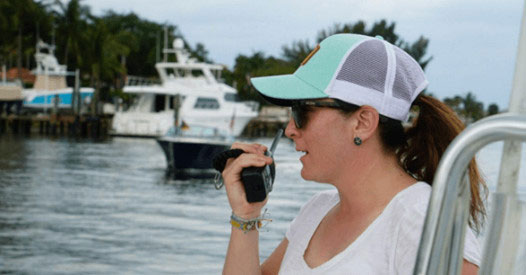AMERICAN RUNABOUTS
The Steinway Of Runabouts
The original Hacker Craft story lives on today
Bruno Cianci, Classic Boats | January 2024

Witnessing when the side of a Hacker-Craft motorboat is decorated with the unmistakable company logo has something sacred about it. Those present can’t help but feel privileged. The delicate operation involves hand-applying the logo with extremely thin sheets of 23-carat gold leaf, tapped into the boat’s mahogany planking, then buried and outlined in paint. The logo in question is that of the company founded in 1908 in Detroit by John L Hacker (1877-1961), a brilliant naval architect renaissance man, to whom the invention of the runabout can perhaps be attributed. It seems, in fact, that it was he who introduced a vee-hull motorboat with controls forward of the engine, and not aster, the practice of American racers of the time.
Certainly Hacker, an original thinker was among those who actively dedicated themselves to building runabouts in the inter-war period, a type that not only made the fortune of his shipyard, but also that of other American boatbuilders like Chris-Craft and of Europeans like Riva after the Second World War, when Carlo Riva’s brand rose to worldwide glory thanks to the runabouts built during the ‘Dolce Vita’.
At the same time, Hacker was building successful racers and other innovative boats like the legendary Lockpat II, a spectacular 40ft, 50-knot-plus, torpedo shaped runabout; El Lagarto, winner of three Gold Cups; My Sweetie; and George Whittell’s Thunderbird, a marvel in mahogany and brushed stainless steel, a link between airplane and boat.



The shipyard and HQ have moved a few times over the years, from Michigan to New York state, but since moving production to Queensbury, NY a few years ago, the Hacker Boat Company seems to have found an optimal balance and size. The atmosphere inside the enormous shed that houses the production site suggests a great community of intent. The specialization of the workforce – 35 floor workers overall, among them some Ukrainian immigrants – is obvious, but the shipyard is keen to point out that the restoration team, is interchangeable wiht the new-build team. Currently the yard has nearly 30 boats (a mix of new and restoration) plus a few more the staff is working up estimates for.



As for the production, the new-builds and divided into two main collections, called Legacy and Aquavant, whose range features the first 100 per cent electric model created together with Ingenity Electric. The Legacy range is more in line with the tradition of the shipyard, but the Sport, Runabout, Sportabout, Sterling and Racer models involve advanced materials, engines, transmission and, on request, a mixed construction. The Sport and Runabout models, for example, can be built with optional fiberglass sheathed bottom and sides, for better durability and reduced maintenance. All this without affecting the classic appearance and beauty of the boats that, in time, have earned the nickname ‘Steinway of Runwabouts’. The notes and pitches they emit are not quite exactly those of the legendary New York pianos, but the craftsmanship involved looks much alike.


